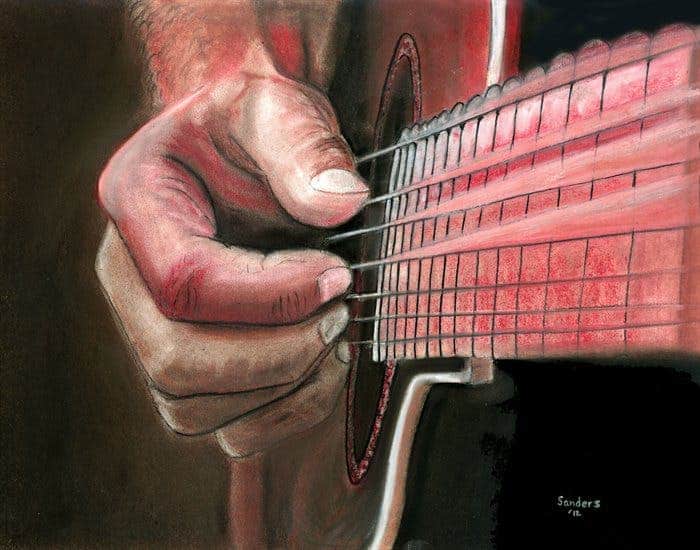Recently, a video published on Vine by Logan Gendizzle went viral. The video claims to show what guitar strings look like up close while the author is playing Weezer’s “Say it Ain’t So”. The video is pretty spectacular, it got tons of shares and likes… and it’s completely fake. The good news is that reality is much cooler.
Guitar Strings and Reality
As anyone who plays the guitar or knows the basic physics of strings could tell, guitar strings just don’t vibrate like that. Just to be completely sure, the writers over at Science Alert contacted Joe Wolfe, a physics and acoustics expert from UNSW Science in Sydney, Australia. According to Wolfe, what we’re seeing is “almost certainly an artefact of a moderately slow camera”. He explained:
“From the two frets in view, we can see that the whole field of view of the camera is only a few centimetres in the foreground. From this and the movie, we would naively deduce that the largest amplitude waves on the strings had wavelengths of only a centimetre or so. In reality, the waves with these wavelengths will have very small amplitudes, and the large amplitude vibrations will have wavelengths of tens of centimetres,” he explains.
So then what resulted in the phenomenon captured in the video? The key lies in the way the camera films the movement.
“The camera does not record all points in a picture at the same time – it scans across in lines from side to side (or sometimes top to bottom) until it has recorded a whole picture.
A more familiar example: Have you ever taken a movie from a high speed train or car window? Nearby objects like electricity posts seem to be leaning. Of course they are not, it’s just that the camera has recorded the top of the post first and, when it gets to the bottom of the post, the train has moved on. It’s more complicated when the object (like these strings) are vibrating,” Wolfe added.
Another video which illustrates a similar effect. The instruments are really out of tune though, so mute it or prepare your ears.
So there you have it: the video is misleading, sorry — the effect comes from the camera work, not from physics. But hey, I do have some good news — guitar strings really are cool when they vibrate; here’s the real deal.
How Guitar Strings Vibrate and Make Sounds
Have you ever wondered how a guitar makes sounds? We’re talking about acoustic guitar — no electrical fuzz, yet. Sound is transmitted via a pressure wave within a material. When you pick the guitar string, it vibrates quickly back and forth, creating such a pressure and leaving a vacuum behind. This alternating pressure creates sounds, which are amplified in the body of the guitar and ultimately sent to your eardrums. The bigger the amplitude of the vibration, the louder the sound. The frequency can also be changed by altering the tension in the string using the tuning pegs: tighter results in a higher pitch. The frequency also depends on the length of the string that is free to vibrate. You can read a more thorough explanation on Wolfe’s page.
The physics of string instruments is pretty awesome and can be quite complicated, so it’s easy to get fooled, especially when dealing with such a complex and intriguing effect.







